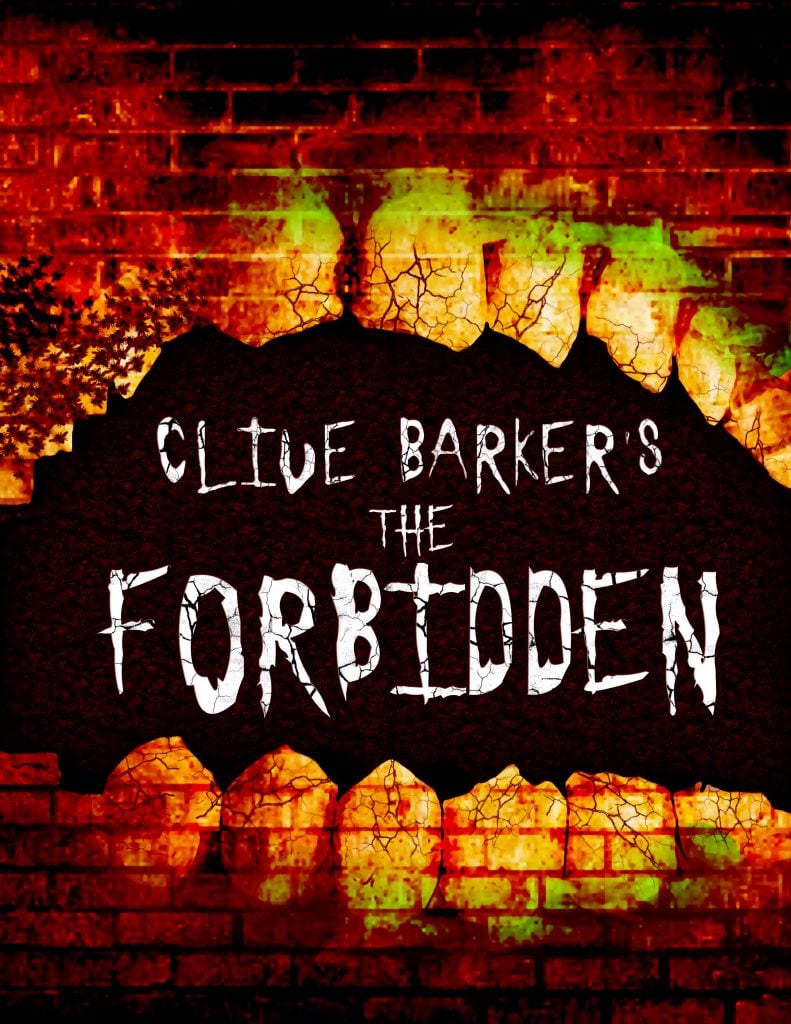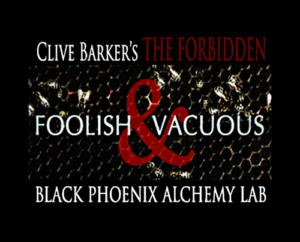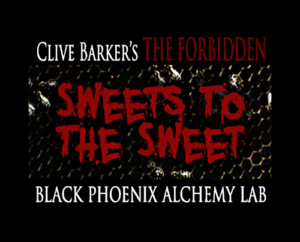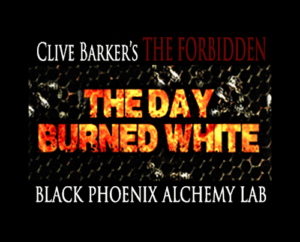Clive Barker
 A visionary, fantasist, poet and painter, Clive Barker has expanded the reaches of human imagination as a novelist, director, screenwriter and dramatist. An inveterate seeker who traverses between myriad styles with ease, Barker has left his indelible artistic mark on a range of projects that reflect his creative grasp of contemporary media — from familiar literary terrain to the progressive vision of his Seraphim production company. His 1998 “Gods and Monsters,” which he executive produced, garnered three Academy Award nominations and an Oscar for Best Adapted Screenplay. The following year, Barker joined the ranks of such illustrious authors as Gabriel Garcia Marquez, Annie Dillard and Aldous Huxley when his collection of literary works was inducted into the Perennial line at HarperCollins, who then published The Essential Clive Barker, a 700-page anthology with an introduction by Armistead Maupin.
A visionary, fantasist, poet and painter, Clive Barker has expanded the reaches of human imagination as a novelist, director, screenwriter and dramatist. An inveterate seeker who traverses between myriad styles with ease, Barker has left his indelible artistic mark on a range of projects that reflect his creative grasp of contemporary media — from familiar literary terrain to the progressive vision of his Seraphim production company. His 1998 “Gods and Monsters,” which he executive produced, garnered three Academy Award nominations and an Oscar for Best Adapted Screenplay. The following year, Barker joined the ranks of such illustrious authors as Gabriel Garcia Marquez, Annie Dillard and Aldous Huxley when his collection of literary works was inducted into the Perennial line at HarperCollins, who then published The Essential Clive Barker, a 700-page anthology with an introduction by Armistead Maupin.
Barker began his odyssey in the London theatre, scripting original plays for his group The Dog Company, including “The History of the Devil,” “Frankenstein in Love” and “Crazyface.”. Soon, Barker began publishing his The Books of Blood short fiction collections; but it was his debut novel, The Damnation Game that widened his already growing international audience.
Barker shifted gears in 1987 when he directed “Hellraiser,” based on his novella The Hellbound Heart, which became a veritable cult classic spawning a slew of sequels, several lines of comic books, and an array of merchandising. In 1990, he adapted and directed “Nightbreed” from his short story Cabal. Two years later, Barker executive produced the housing-project story “Candyman,” as well as the 1995 sequel, “Candyman 2: Farewell to the Flesh.” Also that year, he directed Scott Bakula and Famke Janssen in the noir-esque detective tale, “Lord of Illusions.”
Barker’s literary works include such best-selling fantasies as Weaveworld, Imajica, and Everville, the children’s novel The Thief of Always, Sacrament, Galilee and Coldheart Canyon. The first of his quintet of children’s books, Abarat, was published in October 2002 to resounding critical acclaim, followed by Abarat II: Days of Magic, Nights of War and Arabat III: Absolute Midnight; Barker is currently completing the fourth in the series. As an artist, Barker frequently turns to the canvas to fuel his imagination with hugely successful exhibitions across America. His neo-expressionist paintings have been showcased in two large format books, Clive Barker, Illustrator, volumes I & II.
Clive Barker’s official:
Facebook | Twitter | Deviant Art

 A visionary, fantasist, poet and painter, Clive Barker has expanded the reaches of human imagination as a novelist, director, screenwriter and dramatist. An inveterate seeker who traverses between myriad styles with ease, Barker has left his indelible artistic mark on a range of projects that reflect his creative grasp of contemporary media — from familiar literary terrain to the progressive vision of his Seraphim production company. His 1998 “Gods and Monsters,” which he executive produced, garnered three Academy Award nominations and an Oscar for Best Adapted Screenplay. The following year, Barker joined the ranks of such illustrious authors as Gabriel Garcia Marquez, Annie Dillard and Aldous Huxley when his collection of literary works was inducted into the Perennial line at HarperCollins, who then published The Essential Clive Barker, a 700-page anthology with an introduction by Armistead Maupin.
A visionary, fantasist, poet and painter, Clive Barker has expanded the reaches of human imagination as a novelist, director, screenwriter and dramatist. An inveterate seeker who traverses between myriad styles with ease, Barker has left his indelible artistic mark on a range of projects that reflect his creative grasp of contemporary media — from familiar literary terrain to the progressive vision of his Seraphim production company. His 1998 “Gods and Monsters,” which he executive produced, garnered three Academy Award nominations and an Oscar for Best Adapted Screenplay. The following year, Barker joined the ranks of such illustrious authors as Gabriel Garcia Marquez, Annie Dillard and Aldous Huxley when his collection of literary works was inducted into the Perennial line at HarperCollins, who then published The Essential Clive Barker, a 700-page anthology with an introduction by Armistead Maupin.
Barker began his odyssey in the London theatre, scripting original plays for his group The Dog Company, including “The History of the Devil,” “Frankenstein in Love” and “Crazyface.”. Soon, Barker began publishing his The Books of Blood short fiction collections; but it was his debut novel, The Damnation Game that widened his already growing international audience.
Barker shifted gears in 1987 when he directed “Hellraiser,” based on his novella The Hellbound Heart, which became a veritable cult classic spawning a slew of sequels, several lines of comic books, and an array of merchandising. In 1990, he adapted and directed “Nightbreed” from his short story Cabal. Two years later, Barker executive produced the housing-project story “Candyman,” as well as the 1995 sequel, “Candyman 2: Farewell to the Flesh.” Also that year, he directed Scott Bakula and Famke Janssen in the noir-esque detective tale, “Lord of Illusions.”
Barker’s literary works include such best-selling fantasies as Weaveworld, Imajica, and Everville, the children’s novel The Thief of Always, Sacrament, Galilee and Coldheart Canyon. The first of his quintet of children’s books, Abarat, was published in October 2002 to resounding critical acclaim, followed by Abarat II: Days of Magic, Nights of War and Arabat III: Absolute Midnight; Barker is currently completing the fourth in the series. As an artist, Barker frequently turns to the canvas to fuel his imagination with hugely successful exhibitions across America. His neo-expressionist paintings have been showcased in two large format books, Clive Barker, Illustrator, volumes I & II.
Clive Barker’s official:
Facebook | Twitter | Deviant Art
Clive Barker - The Forbidden
 Black Phoenix Alchemy Lab is thrilled to present our collection of scents dedicated to Clive Barker’s body of work. The first fragrances in the series are inspired by a tale from Volume Five of the Books of Blood: the Forbidden.
Black Phoenix Alchemy Lab is thrilled to present our collection of scents dedicated to Clive Barker’s body of work. The first fragrances in the series are inspired by a tale from Volume Five of the Books of Blood: the Forbidden.
It is a tremendous honor to work with Clive Barker, and we are eternally grateful to Clive Barker and Mark Miller for making this project possible!
Clive Barker’s official:
Facebook | Twitter | Deviant Art
-
Foolish and Vacuous Perfume Oil
Add to cartShe was glad to see the back of him. When he failed to return that night she didn't even think of weeping about it. He was foolish and vacuous. She despaired of ever seeing a haunted look in his dull eyes; and what worth was a man who could not be haunted?
A scent with no depth: a light, reedy, almost vapid take on a classic men’s fougere.
-
Sweets to the Sweet Perfume Oil
Add to cartOne sight did catch her attention however. Scrawled on the paving stones she was walking over—and all but erased by rain and the passage of feet—the same phrase she'd seen in the bedroom of number 14: “Sweets to the sweet.” The words were so benign; why did she seem to sense menace in them? Was it in their excess, perhaps, in the sheer overabundance of sugar upon sugar, honey upon honey?
Sugar upon sugar, honey upon honey: white cane sugar and honey absolute.
-
The Day Burned White Perfume Oil
Add to cartUsing the door, which was centrally placed in the wall like a mouth, the artists had sprayed a single, vast head onto the stripped plaster. The painting was more adroit than most she had seen, rife with detail that lent the image an unsettling veracity. The cheekbones jutting through skin the color of buttermilk; the teeth, sharpened to irregular points, all converging on the door. The sitter’s eyes were, owing to the room’s low ceiling, set mere inches above the upper lip, but this physical adjustment only lent force to the image, giving the impression that he had thrown his head back. Knotted strands of his hair snaked from his scalp across the ceiling. Was it a portrait? There was something naggingly specific in the details of the brows and the lines around the wide mouth; in the careful picturing of those vicious teeth. A nightmare certainly: a facsimile, perhaps, of something from a heroin fugue. Whatever its origins, it was potent. Even the illusion of door-as-mouth worked. The short passageway between living room and bedroom offered a passable throat, with a tattered lamp in lieu of tonsils. Beyond the gullet, the day burned white in the nightmare’s belly. The whole effect brought to mind a ghost train painting. The same heroic deformity, the same unashamed intention to scare. And it worked; she stood in the bedroom almost stupefied by the picture, its red-rimmed eyes fixing her mercilessly.
Plaster and spraypaint, mottled with buttermilk – sweet, chalky, and edging on sickly. White and golden amber beams of daylight pour through the belly of the scent, while oakmoss and Spanish moss add a touch of decay.


